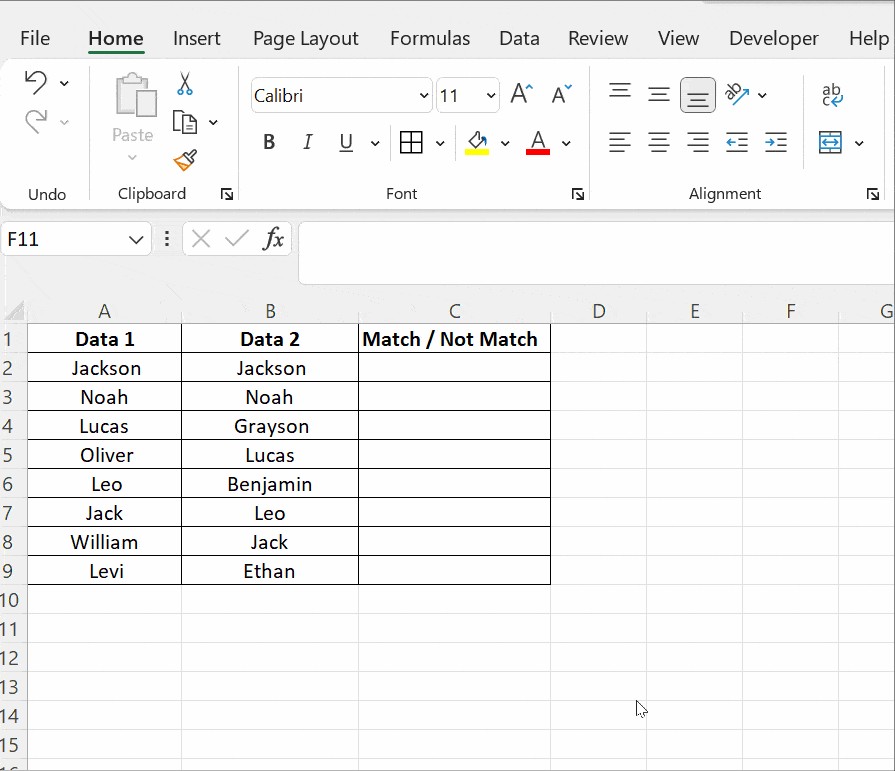Finding matches between two columns in Excel is a common task, crucial for data analysis and cleaning. Whether you’re working with small datasets or large spreadsheets, Excel provides various techniques to efficiently compare columns and identify matching values. This guide explores different methods, from basic formulas to advanced functions and conditional formatting, to help you master the art of comparing columns in Excel.
Comparing Columns in Excel: A Comprehensive Guide
Excel offers a robust toolkit for comparing data across columns. Let’s delve into some of the most effective techniques:
1. Direct Comparison with the Equals Operator
For a simple row-by-row comparison, the equals operator (=) is your go-to tool. In a new column, enter a formula like =A2=B2. This formula compares the values in cells A2 and B2 and returns TRUE if they match, and FALSE if they don’t. Drag this formula down to apply it to the entire dataset.
2. Leveraging the IF Function for Customized Results
The IF function allows for more descriptive results. The formula =IF(A2=B2,"Match","No Match") compares cells A2 and B2. If they match, it displays “Match”; otherwise, it shows “No Match”. This provides clearer identification of matching and non-matching entries.
3. Case-Sensitive Comparison with the EXACT Function
When case sensitivity matters, the EXACT function comes into play. =EXACT(A2,B2) compares the text in cells A2 and B2, considering upper and lowercase differences. It returns TRUE only if the text strings are identical in terms of content and case. Combine this with the IF function for user-friendly outputs: =IF(EXACT(A2,B2),"Match","No Match").
4. Visualizing Matches with Conditional Formatting
Conditional formatting highlights matching cells without requiring formulas in separate columns. Select the two columns you want to compare, go to Home > Conditional Formatting > Highlight Cells Rules > Duplicate Values. This will visually highlight all matching entries in your selected range. You can choose predefined formatting or customize it to suit your preferences. The “Unique Values” option highlights cells with distinct values.
5. Advanced Comparison with LOOKUP Functions (VLOOKUP, INDEX-MATCH)
For more complex scenarios, such as comparing data across different tables or sheets, LOOKUP functions like VLOOKUP and INDEX-MATCH are powerful tools. These functions allow you to search for a value in one column and return a corresponding value from another column, even in a different location.
Conclusion: Choosing the Right Method
The best method for comparing columns in Excel depends on your specific needs and the complexity of your data. For simple comparisons, the equals operator or IF function may suffice. For case-sensitive comparisons, use the EXACT function. Conditional formatting provides visual highlighting, while LOOKUP functions handle complex scenarios across different datasets. By mastering these techniques, you can efficiently compare columns in Excel and unlock valuable insights from your data.

